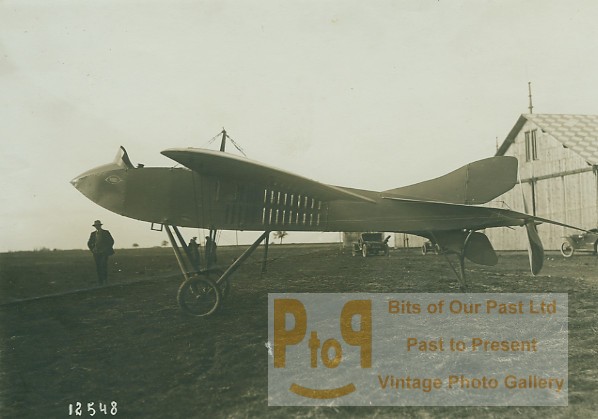Poynter Monoplane
During May 1910, Howard Wright built a single-seat tractor monoplane designed by E.J. Poynter, a well-known artist who lived near Brooklands. The monoplane was of sound design and bore the hall-marks of Wright's first class workmanship. It followed conventional construction of the period but was readily distinguishable by its large Demoiselle-style tail and tapered wings. Power was provided by a 60 hp Green engine driving a two-blade propeller. Construction was undertaken at Battersea and tests were made at Brooklands in June but the aircraft was never flown, because Poynter was injured in a car accident.
Span 45 ft; length 28 ft; wing root chord 9 ft; wingtip chord 6 ft; wing area 320 sq ft; elevator area 60 sq ft; rudder area 30 sq ft.
Johannes

